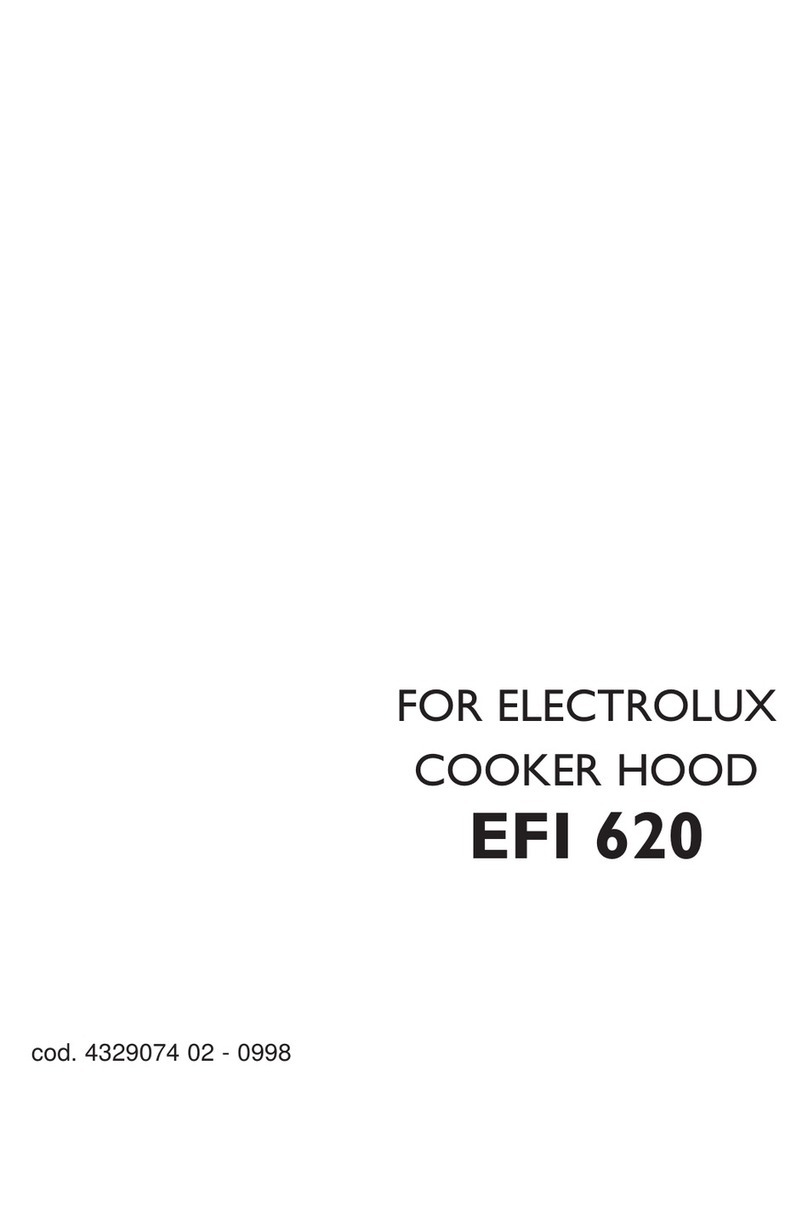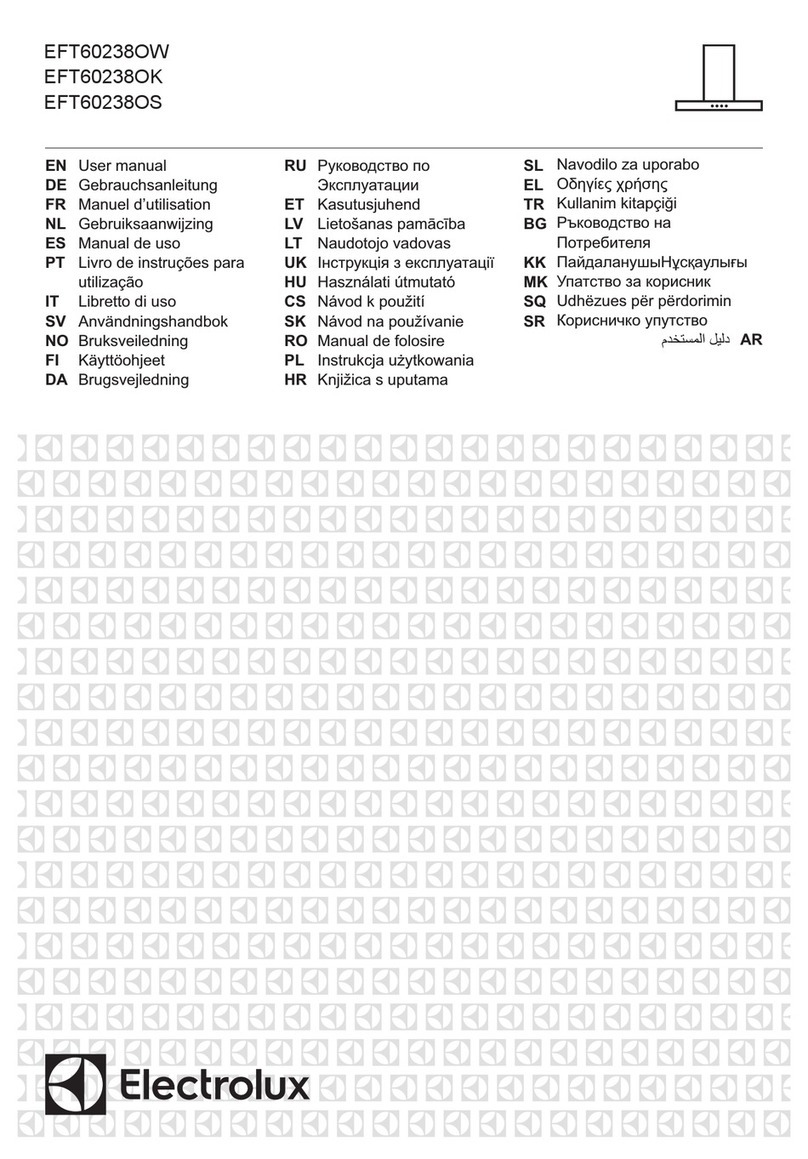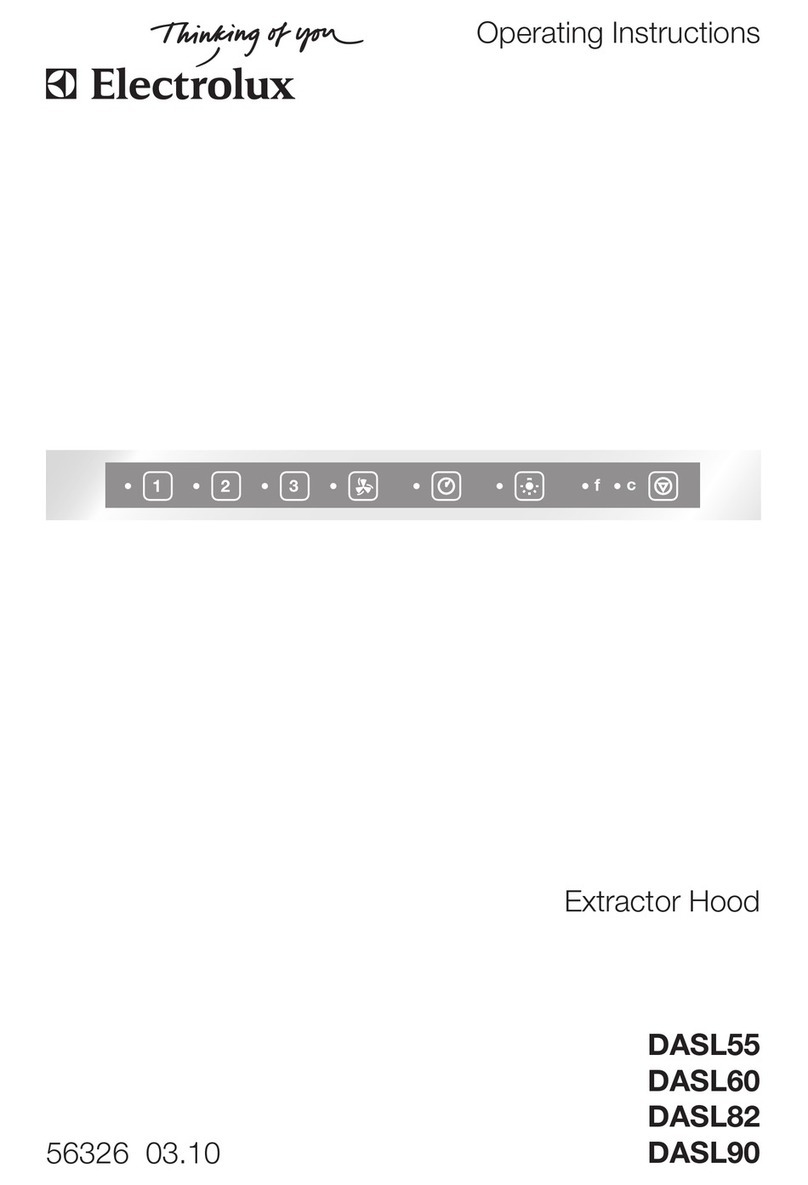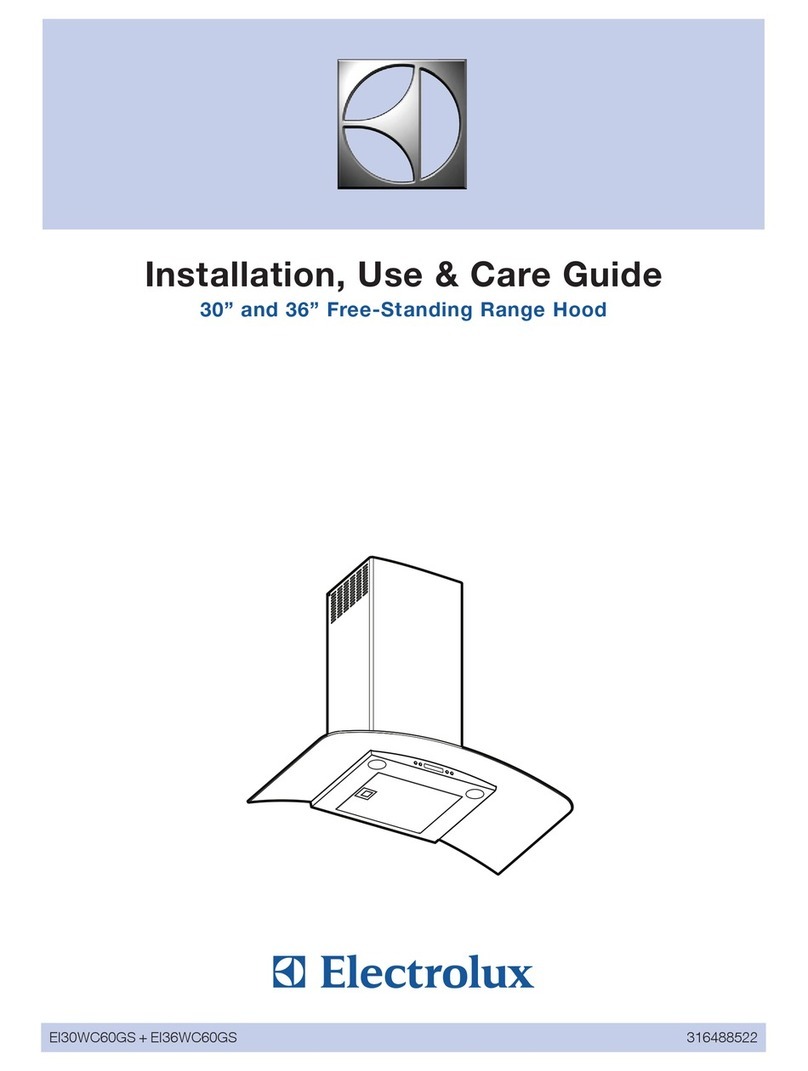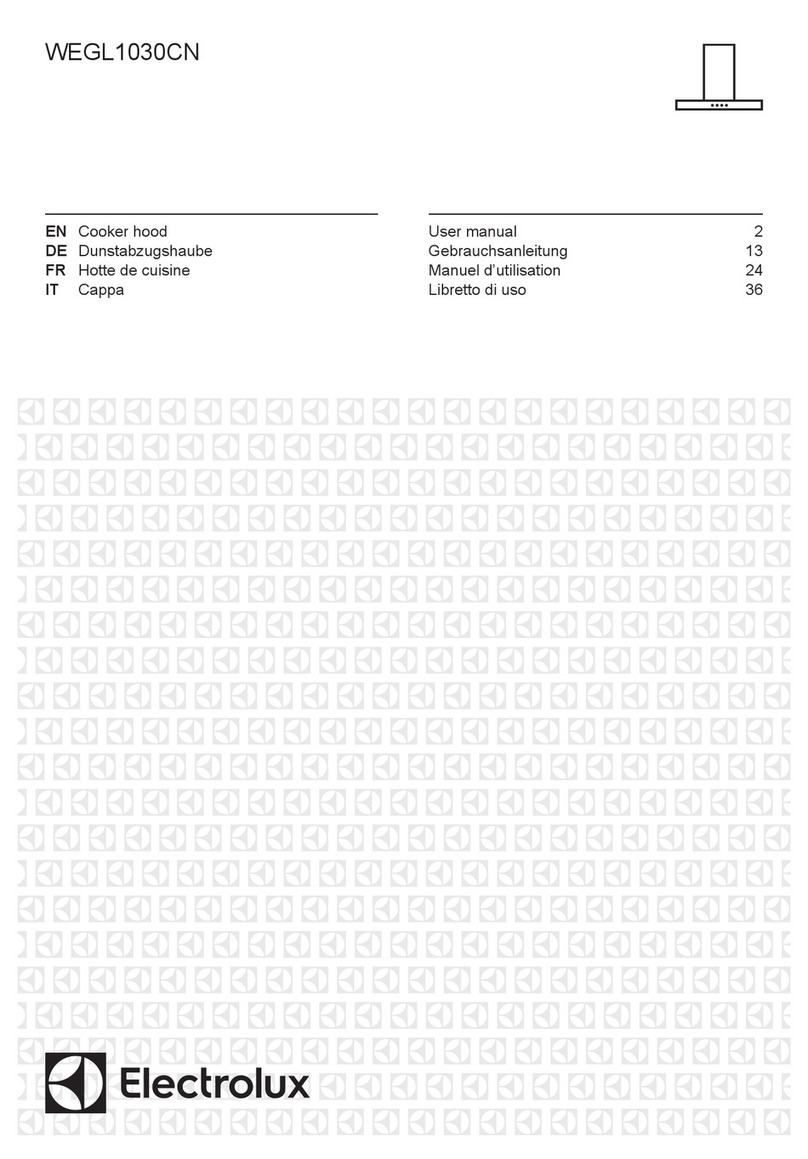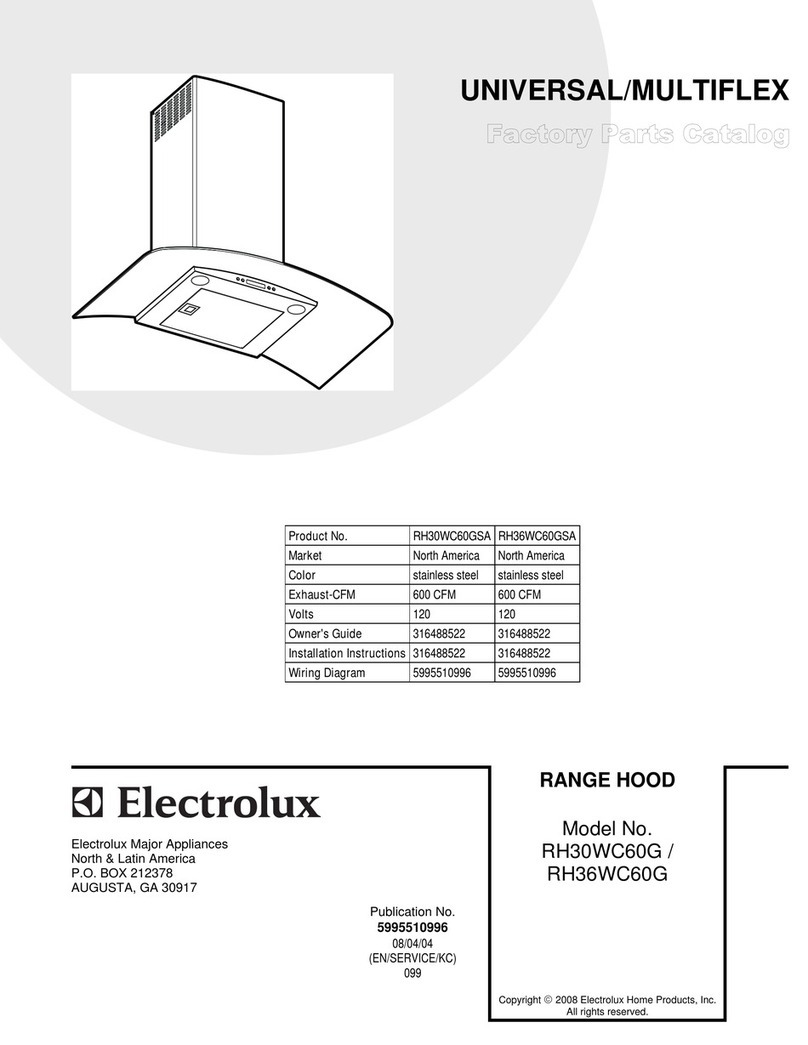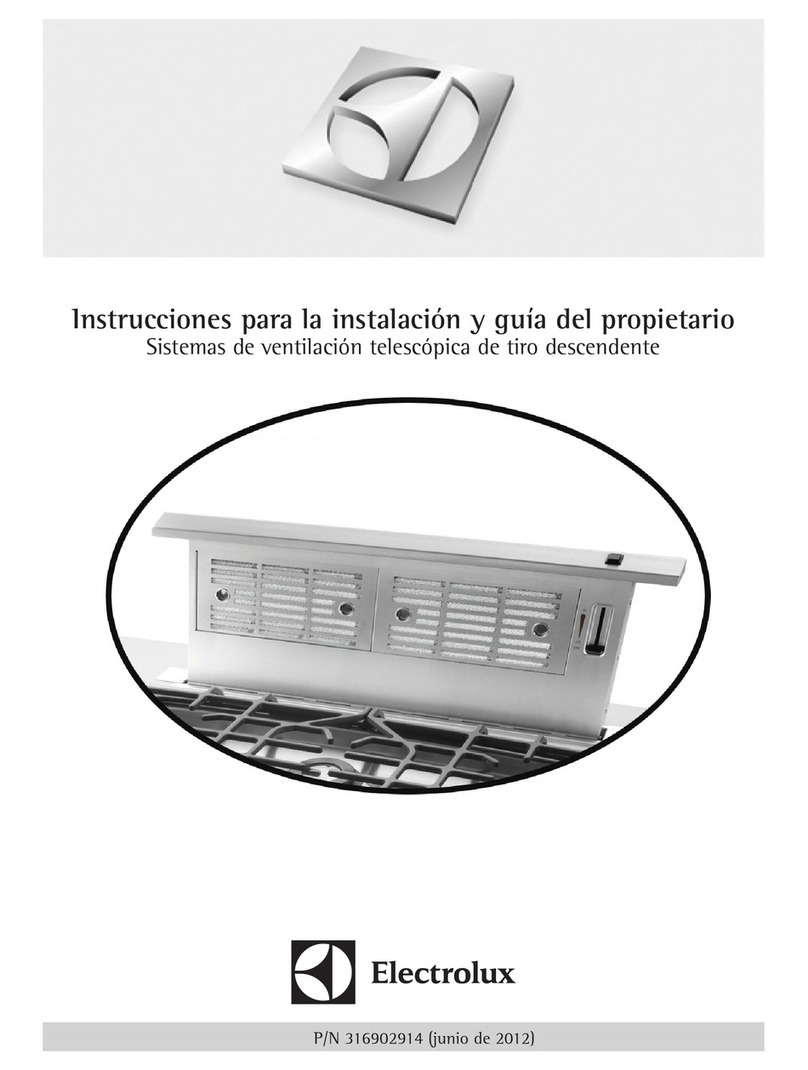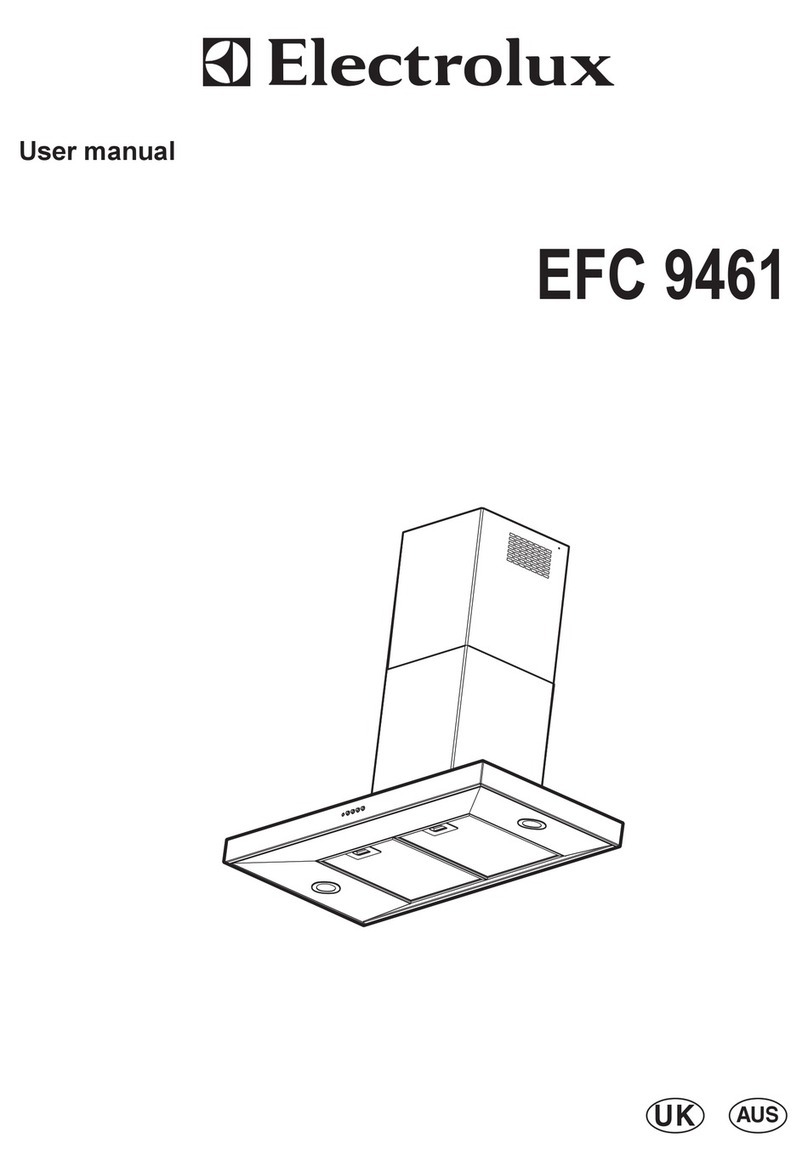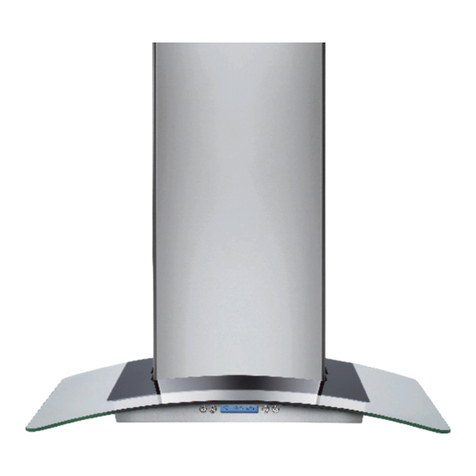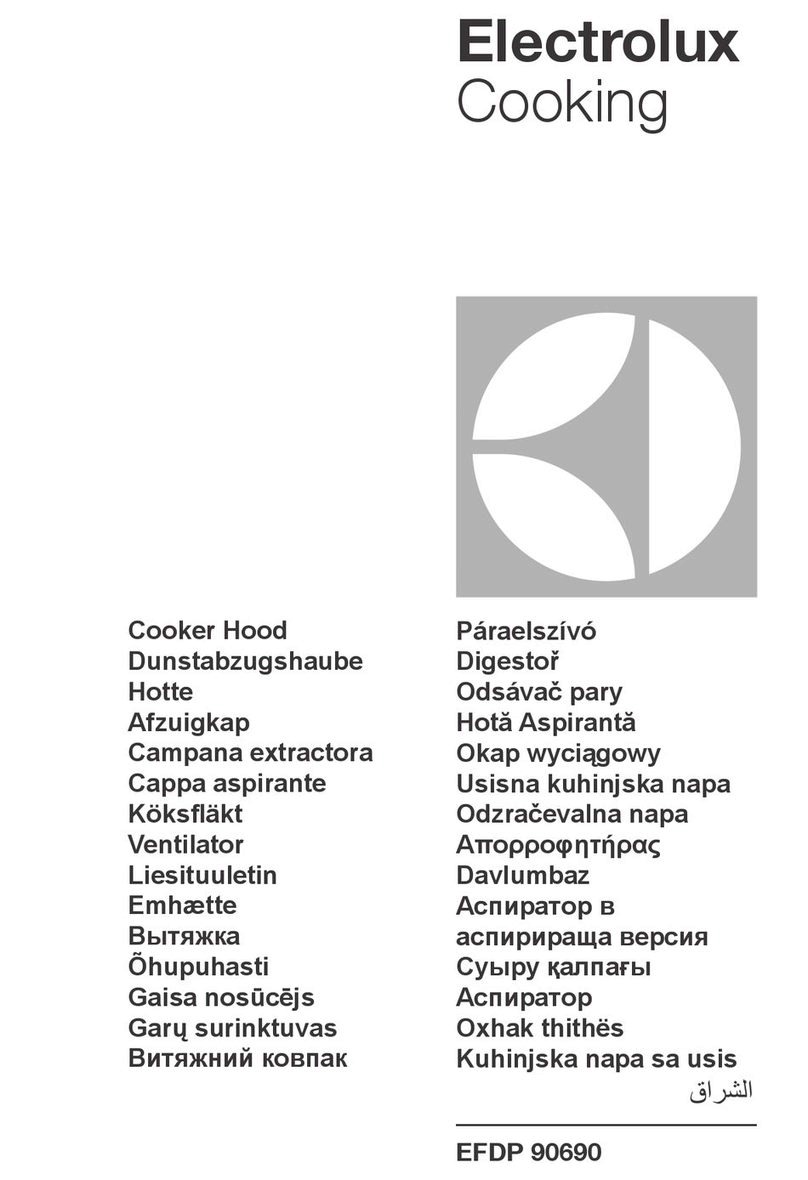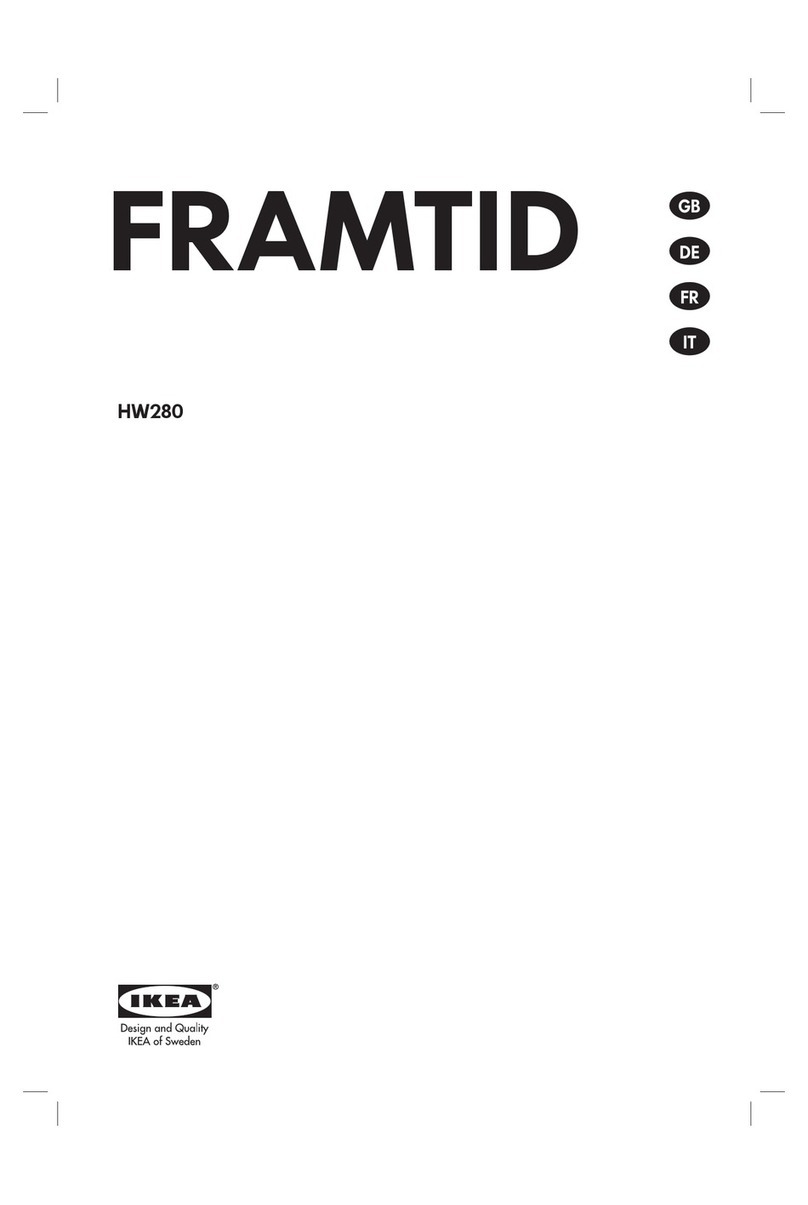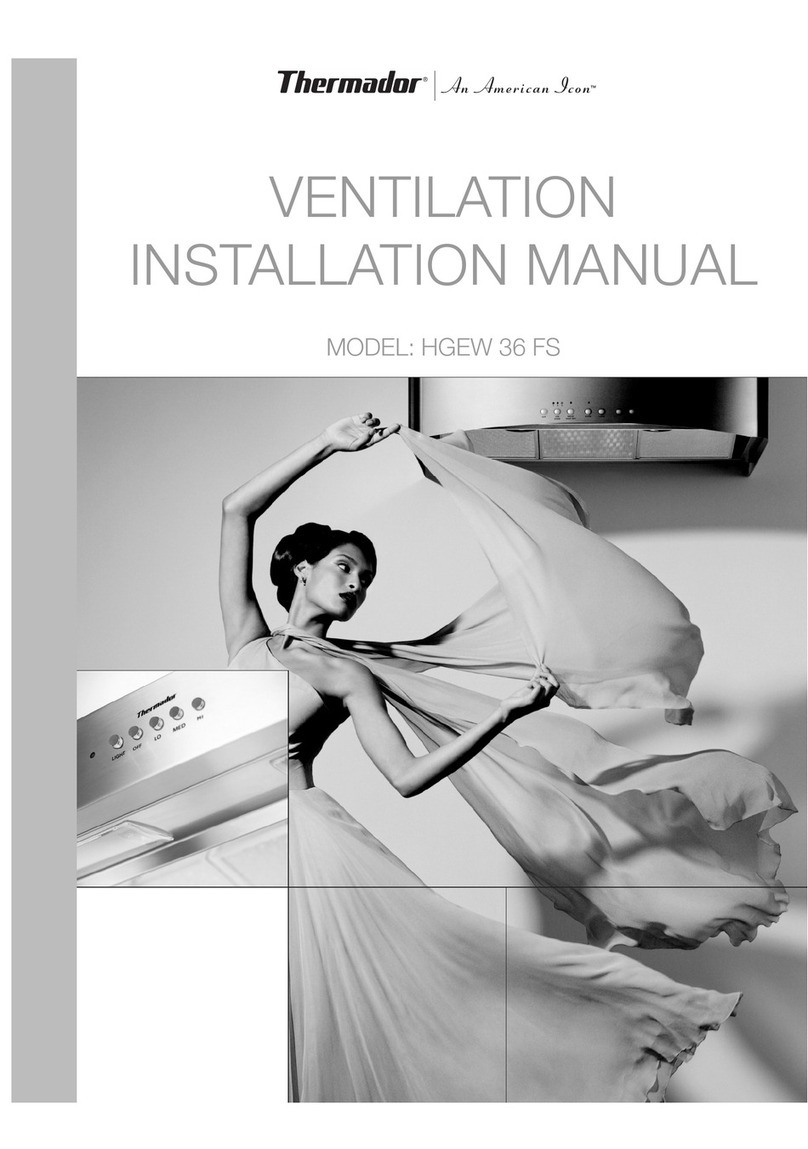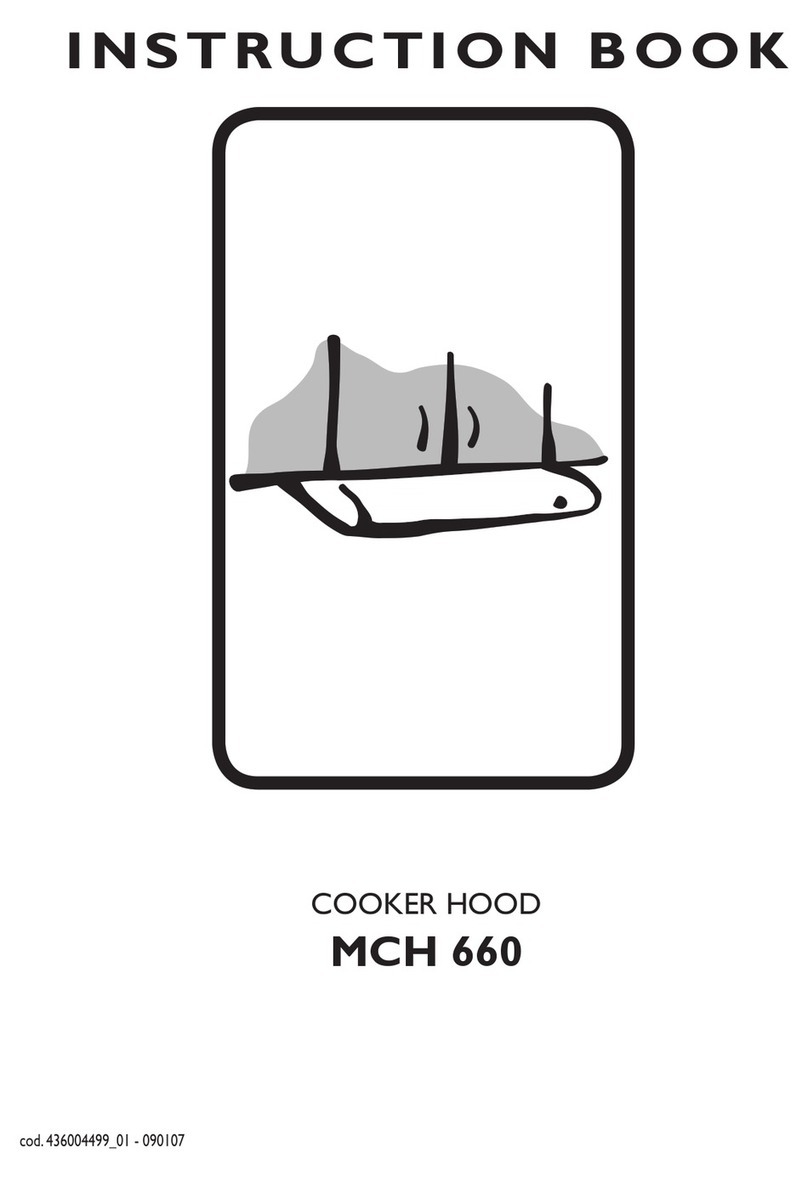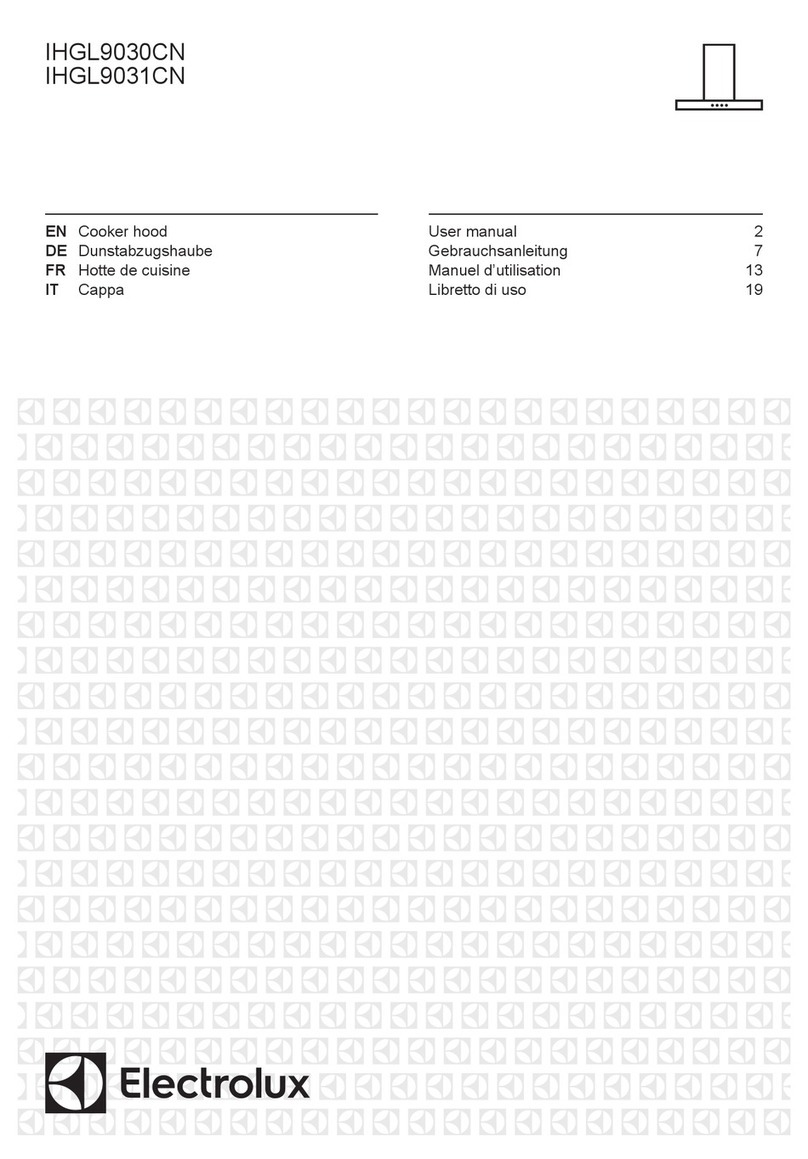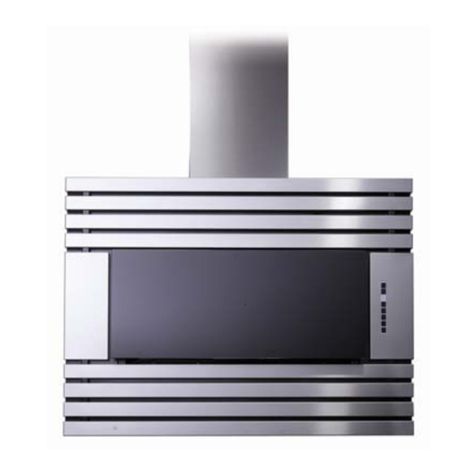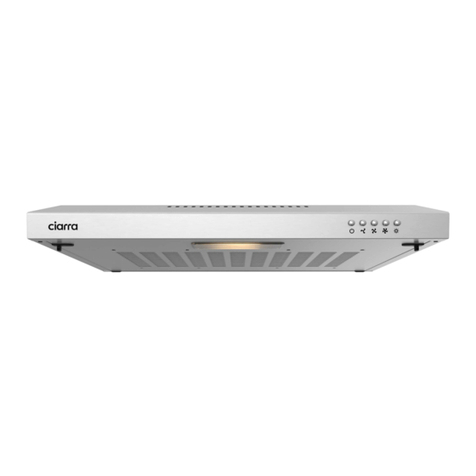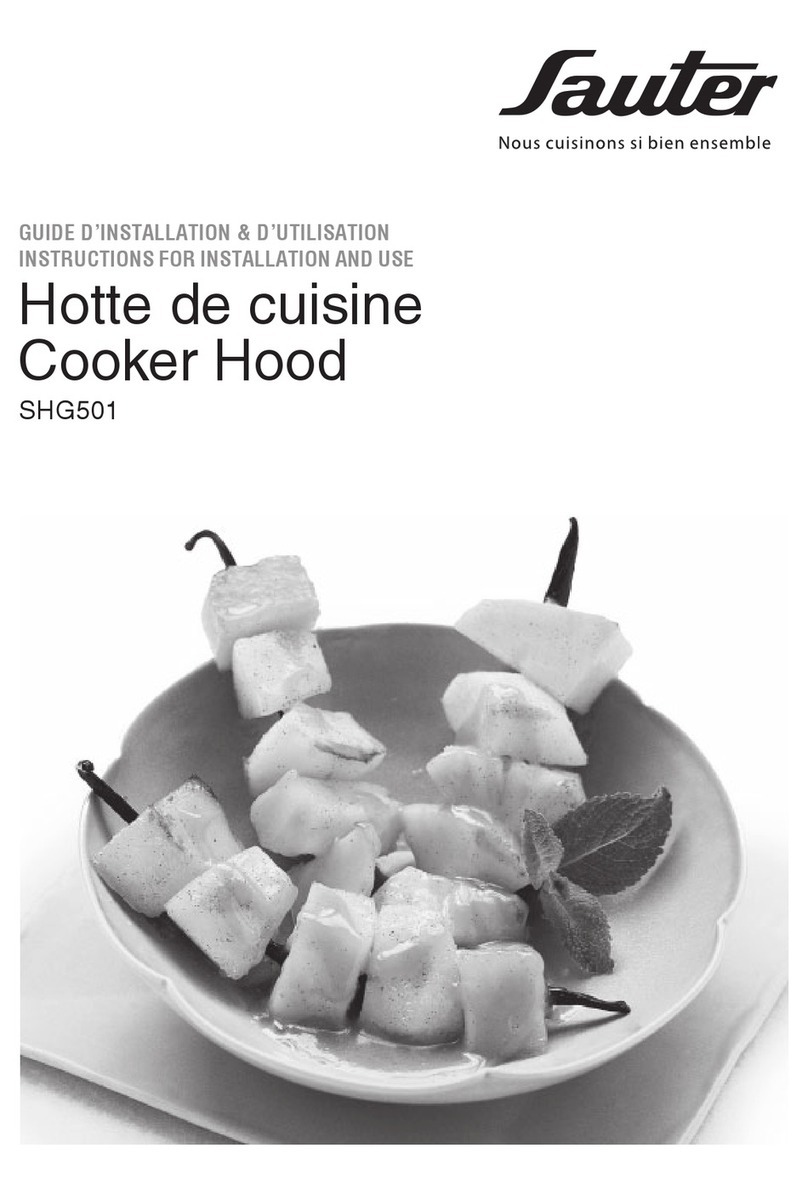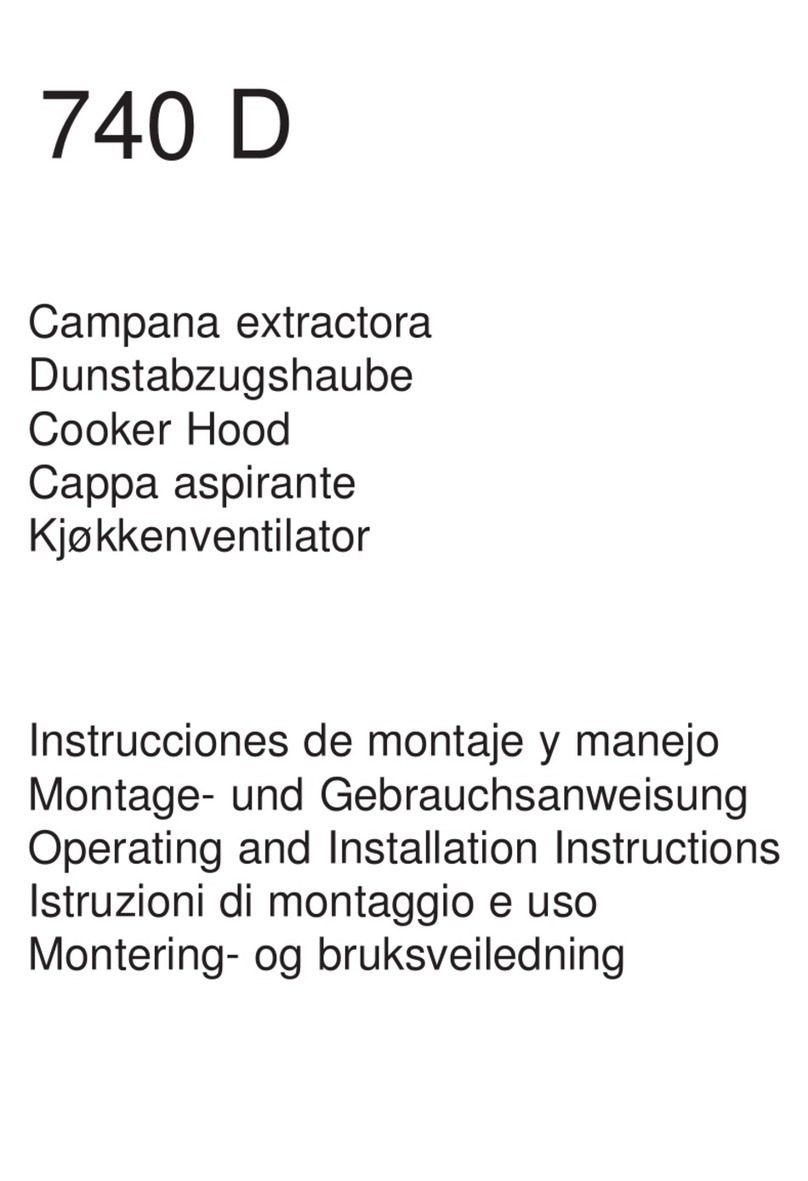32
Safety instructions
The hood is not designed for commercial use, but only for normal culinary use in individual domestic settings. It
complies fully with international safety regulations and with international quality standards. All possible precau-
tions do not however prevent all risk of accidents.
It is therefore vital that you read the instructions, advice and safety tips provided herein before installing
and using this hood. Pay special attention to the passages marked with a warning triangle, to avoid all personal
and material damage. eep this user manual in a safe place for future reference or in the event of sale or transfer
to another owner.
Hood use
Do not leave flammable products under the
hood, such as oil and frying fat, paraffin oil,
etc. In the event of fire, turn both the cooker
and the hood off immediately.
Attention! Cover the fire. Never attempt to
extinguish it by pouring ater over it.
Do not flambé food beneath the hood. This
could start a fire. Keep in mind that fats
heated to high temperatures could
spontaneously ignite. Never leave a hot frying
pan under the hood if you have to leave the
kitchen.
The filter must be cleaned regularly in order
to prevent any fat from dropping back do n
onto hot burners or hotplates, hich could
start a fire. Also read the chapter entitled
"Care and cleaning" in this manual.
Scrapping
When scrapping the hood, take all the
necessary steps set forth by the la to prevent
all future accidents. Unplug the plug on the
po er supply cable from the all socket and
cut the cable near the appliance air inlet.
Contact your local authorities for details on
scrapping your hood.
How to read this user manual
The symbols belo ill guide you as you read
through this user manual:
Safety instructions
Information on caring for the environment
Installation and appliance care
All electrical installation operations must be
carried out by a qualified electrician and the
hood itself must be installed by a skilled
professional. A hood that has been installed
by an unqualified person may lead to
malfunctioning, and even personal or material
damage.
The hood must be installed at a minimum of
40 cm above an electric hob or cooker and at
least 65 cm above gas burners or a gas cooker.
During installation, make sure the electrical
po er supply cable is left completely free and
in perfect condition.
The electrical po er supply to the hob is only
cut off hen the po er supply cable is
unplugged or the fuse is disconnected.
The la s and regulations applicable to the
method used for the vented air outlet must be
observed. For example, the exhaust air must
not be vented to ards ducts used for
combustion flue gases, po ered by a type of
energy other than electricity, such as fuel-oil
boilers and ood-fired stoves.

